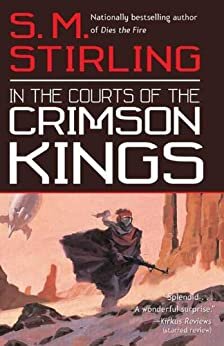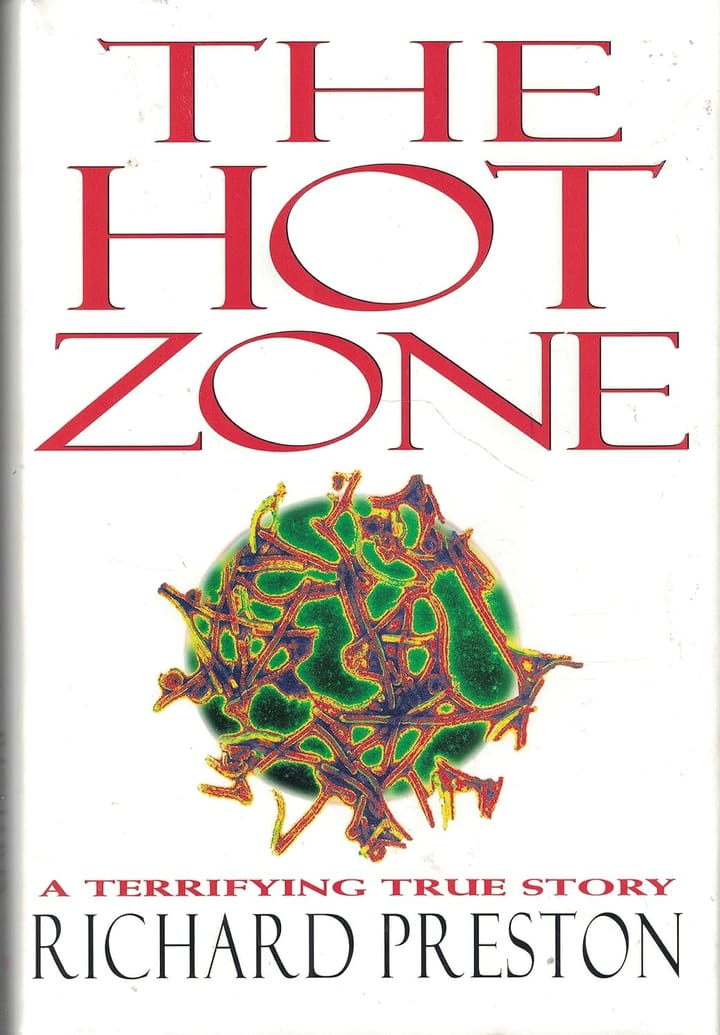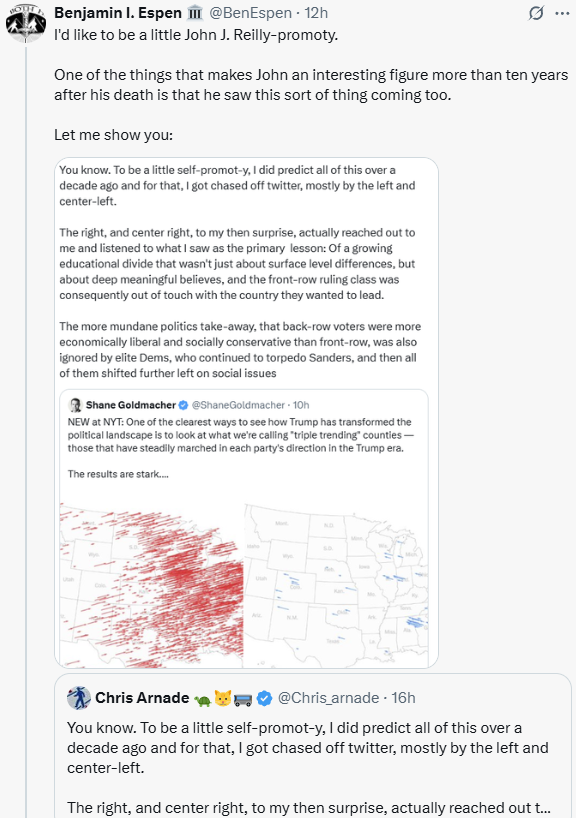The Long View 2008-06-04: Toward the Courts of the Crimson Kings
This review of In the Courts of the Crimson Kings [Amazon link] is a great excuse for John J. Reilly to indulge in his hobby of metahistory, the way that cultures have a tendency to follow cyclical patterns of development over centuries. The book is fun, and John’s digressions are fun too.

Toward the Courts of the Crimson Kings
As regular visitors to this site will know, the morphology of the political and cultural history of the 21st century has been clear for some time. In this posting, I would like to glance at a more open question: the course of history after the universal state comes to an end six hundred years from now.
Actually, I have no more information on this subject than I did when I wrote Spengler's Future, but I have just read a wonderfully entertaining novel by S.M. Stirling, At the Courts of the Crimson Kings, that touches on some of the relevant issues.
The first thing to note about the book is that readers of a certain age are supposed to be reminded of the druggy 1970s art-rock album of similar name. In any case, the book is the second installment in a series based on the alternative-history premise that the solar system was so designed (indeed, Intelligently Designed by non-divine intelligences) in such a way that the pulp-magazine science-fiction of the 1920s and '30s could actually happen. (Well, could actually happen in terms of physics, if not of character development.) The first novel, The Sky People, was set on a jungle-covered and dinosaur-ridden Venus. The Crimson Kings is set on a dying Mars, in the fading afterglow of a planetary empire that had lasted 30,000 years.
A lesser SF author would have tried to avoid the clichés about an inhabited Mars that have accumulated over the years; this book embraces them all, from the notion that Martian technology focused on biology rather than mechanics to the use of sail-powered desert-ships. (And since this is alternative history, there are many huge zeppelins.) The cleverest points are linguistic and cultural, though. Martian civilization had always been relentlessly "positivist," we are given to understand; the post-imperial "Demotic" that modern Mars speaks is essentially an application of extensional logic, sprinkled with florid honorifics. (Note to author: spoken Chinese really should not be used as an example of a particularly difficult language; it's the writing that drives students mad.) And then there is the link between theology and science. There is no religion on Mars, and no evidence that there had ever been any. This may be connected to the fact that the Martians never got beyond Newtonian physics, and to the lack of a concept of historical or technological progress. (The lack of advanced mathematics, I suspect, is an homage to Van Vogt's short story, "The Vault of the Beast.")
Still, Alternative Mars does have parallels with terrestrial history. There have been long-running polities on Earth that purported to exercise a supreme dignity, if not necessarily authority, over the whole habitable world. After such polities have collapsed, the successor societies pined for the lost age and tried to reestablish it. The Martian imperium, which began about the time the Cro-Magnons were getting a grip on the Neanderthal problem, might have lasted forever. Universal Martian civilization snapped because the atmosphere was slowly volatilizing away into space.
Terrestrial political cultures sometimes aspire to that kind of stability, but never achieve it. Where cultural evolution creates state systems that crystallize into universal states, the universal states last about 500 years with eerie regularity. That was true even in China, which has had two universal state periods, the first beginning with the Qin Dynasty at the end of the second century BC and the second with the Ming Dynasty 1,500 years later. In this connection, we should remember that there is a difference between what Toynbee called a universal state and a political unit that happens to control all or most of its culture area. The second situation has obtained, ephemerally, in the post-Roman history of Europe more than once, but without any chance that a universal state would be established. Similarly, powerful Chinese dynasties have controlled most of what we call China without being the governments of a universal state. Such a state reflects a condition of completion (or exhaustion, to the pessimists) that is reflected also in science, the arts, and politics. Almost without exception, universal states have provided technologies and ideas to later societies (Toynbee thought them important chiefly as the incubators of "universal churches"), but they have no internal dynamic except the struggle to preserve themselves. So far, at least, this struggle has eventually failed, to be followed by unsuccessful efforts to reestablish the universal state. This was true even of China: the attempts to reestablish the China of the Han Dynasty began in the third century AD but were overwhelmed in the fourth; the slow process that led to the Ming Dynasty was the tale of a related but different culture.
As for the attempts at revival, we should remember that empires become folk culture more easily than republics do; or, as Julius Evola would have it, universal polity is an archetype that keeps trying to assert itself. In any case, throughout history, it is has usually been the peasants who want to restore the "good emperor" (as the cranky peasants called their Hapsburg [Habsburg BIE] ruler during the unsuccessful nationalist uprisings of 1848) or the legitimate king. As with the Canudos uprising in Brazil, these episodes often have millenarian overtones. More recently, we have seem that Osama bin Laden wants to restore the Caliphate, the Muslim incarnation of universal polity. Still, the pattern seems to be that the prospect of reunification ceases to be a matter of practical politics within three or four generations after the collapse. The ideal of reunification survives, but as a feature of universal eschatology.
In this connection, we may note that the final volume of The Lord of the Rings is "The Return of the King." The trilogy tells just this story of eschatological revival. Once again we see, as several observers have noted, Tolkien made up very little. In fact , The Lord of the Rings now can be seen as an example of one of the characteristic products of the mid-20th century: the synthetic metamythology. Tolkien’s true peers are not, perhaps, C.S. Lewis and Charles Williams, but Jung and Campbell and Evola.
But I digress.
Egypt is the one apparent exception to the rule that attempts to revive universal states peter out after about a century. The New Kingdom, sometimes called the Empire, was the Egyptian version of a universal state; like the others, it ran for about 500 years, coming to a crepuscular end in the 11th century BC. However, as Toynbee noted, the ancient Egyptian polity neither crumpled to dust not have gave birth to a new society. Instead, it failed to die. Over the next 500, ephemeral dynasties established control over all or part of historical Egypt. Egypt was conquered from the [west] by Libya, by what today is Ethiopia, and by Babylon and Assyria. Egyptian culture decayed into what even the friendliest observer must call rank superstition and folk art. The learned, such as they were, forgot how to read the script of their own sacred texts. According to Herodotus, the last native Egyptian pharaohs had no more freedom than sacred monkeys. Still Egypt did not die. The various conquerors set up puppets who maintained the system for them; and the puppets sometimes became independent when their overlords retreated. Only in the 6th century was Egypt’s political independence ended decisively, by the Persians. Nonetheless, even a half-millennium later, Augustus found that because he was “King of Egypt,” the heir of the pharaohs, he could not resign as head of the Roman state if Egypt was to be retained as a province.
S.M. Stirling, by the way, seems to be aware of the anomaly. The Crimson Kings is enlivened by expository excerpts from an alternative-history Encyclopedia Britannica of 1998, one of which deals with Martian political theory. The problem with the subject is that there is not very much of it. The only political tradition is the imperial tradition and its ideology of "Sustained Harmon" (which, of course, is reminiscent of the Chinese "Mandate of Heaven" and, in the Egyptian context, "ma'at"). It is as if, we are told, the Egyptian pharaohs had ruled the all of Earth throughout recorded history until just a few centuries ago.
Assuming that no extraterrestrial analogues of the Assyrians or Persians present themselves, could civilization on Earth culminate in some such low-power steady-state? Olaf Stapledon suggested as much in his portrayal in First and Last Men of the First World State, but even he gave this universal state a term limit with the exhaustion of fossil fuels.
One wonders whether this kind of zombie civilization is altogether natural. One of the reasons Egypt kept reviving, perhaps, was that Egypt by the end of the New Kingdom was part of an international trading system. There was money to be made by anyone who could police the Nile well enough for traffic to continue to flow to the Mediterranean. And for that matter, the long reign of Sustained Harmony on Mars seems to have been aided by certain mind-control technologies that the Intelligent Designers of the solar system either gave to the Martians or helped them construct.
But what about the Singularity, you ask, with the Singularity understood as the return of the enchanted world? Maybe there will always be a place for fairytale emperors.
Copyright © 2008 by John J. Reilly
Support the Long View re-posting project by downloading Brave browser, and then trying it out. With Both Hands is a verified Brave publisher, you can leave me a tip too!



Comments ()